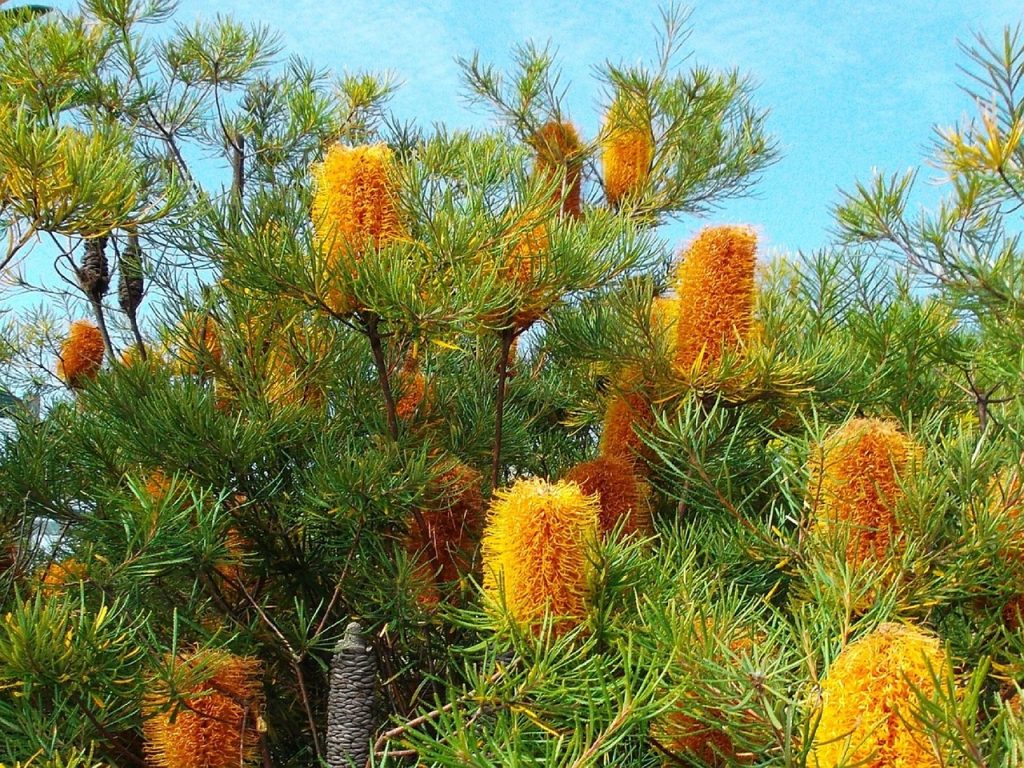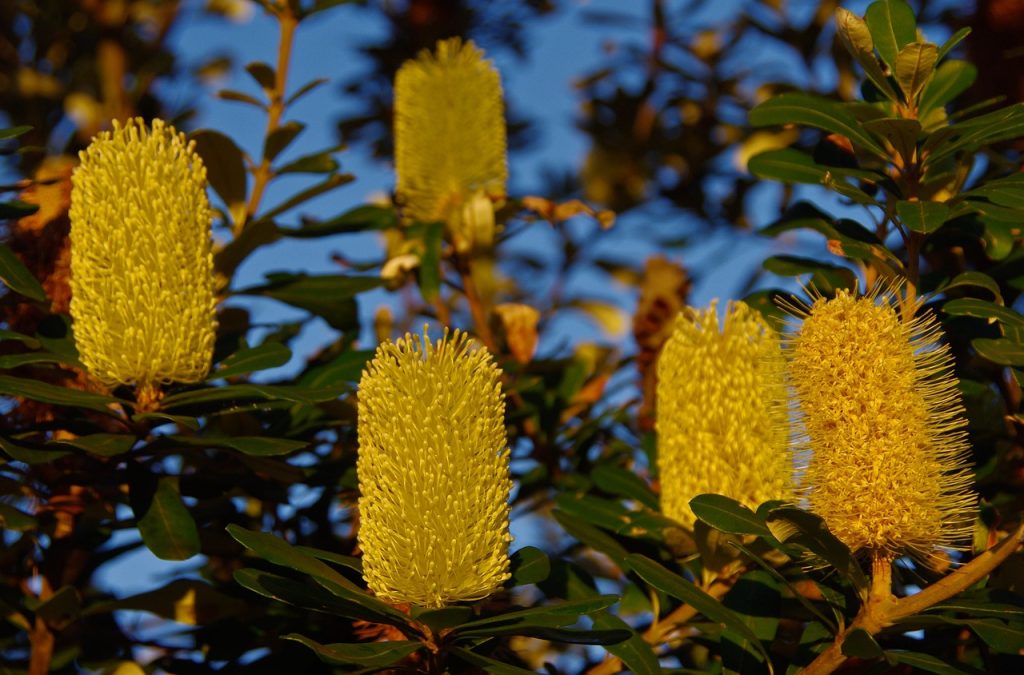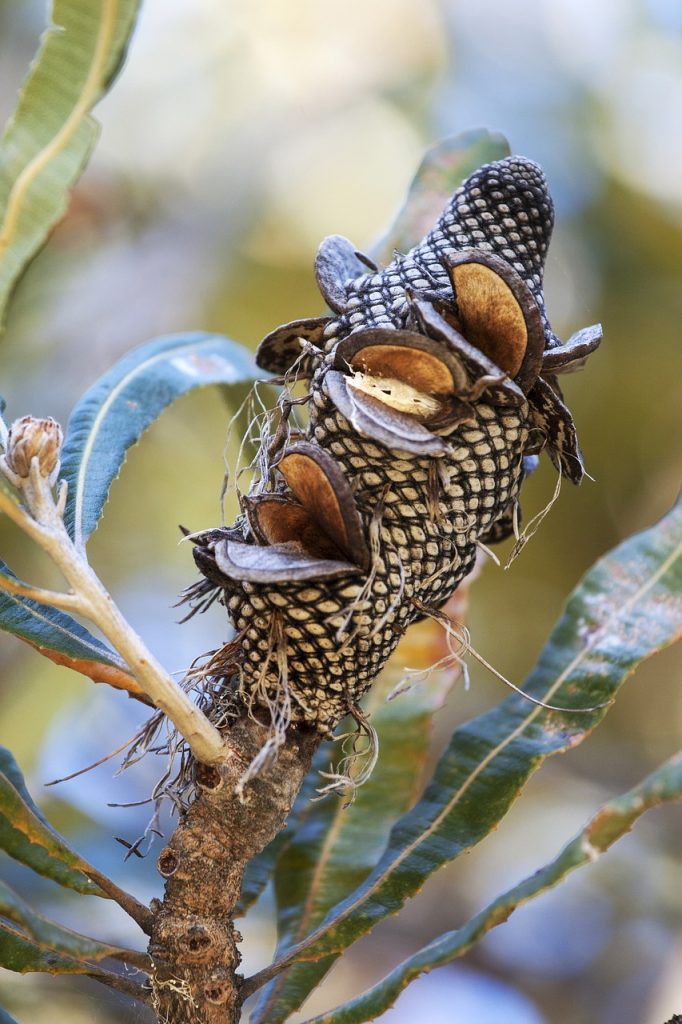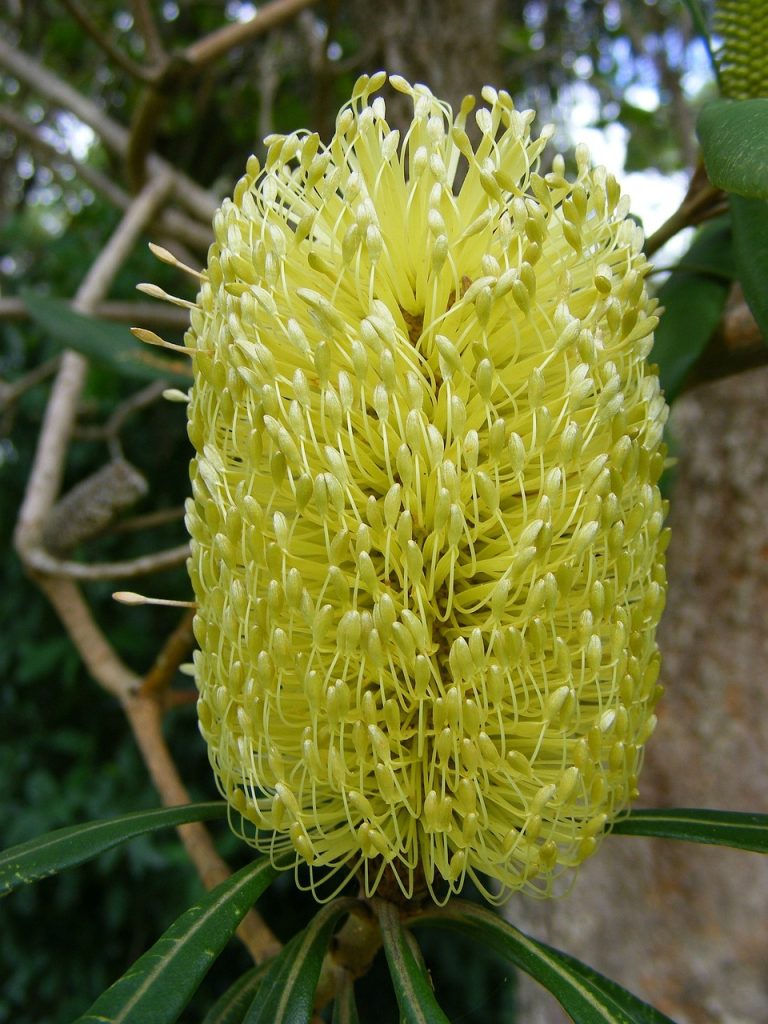Coastal Banksia, or Banksia integrifolia, is a tough tree native to Australia’s eastern coast. It thrives in coastal dunes, woodlands, and rocky outcrops. Growing up to 25 meters tall, it often stays smaller in windswept coastal areas. The long, narrow leaves have dark green tops and silvery undersides. In autumn and winter, the tree produces pale yellow flower spikes that attract pollinators. Woody cones follow, holding seeds that can stay on the tree for years.
Adapted to sandy soils, salt spray, and strong winds, it is perfect for coastal landscaping. It supports local wildlife by providing nectar for birds and bees and seeds for animals like cockatoos. Indigenous Australians traditionally used its flowers to make sweet drinks from nectar. Valued for its resilience and beauty, Coastal Banksia plays a vital role in both gardens and ecosystems.

Scientific Classification of Coastal Banksia
| Kingdom | Plantae |
| Clade | Tracheophytes |
| Clade | Angiospermae |
| Clade | Eudicotidae |
| Order | Proteales |
| Family | Proteaceae |
| Genus | Banksia |
| Common Name | Banksia integrifolia |


Quick Information
| Plant Type | Evergreen tree |
| Identification | Height: Can grow up to 25 meters (82 feet) tall, smaller in coastal areas Leaves: Long, narrow, dark green on top, silvery underside, serrated edges Stem: Woody trunk with rough, gray bark, often deeply furrowed Flowers: Cylindrical flower spikes, pale yellow, up to 12 cm long, bloom in autumn and winter Roots: Deep and spreading root system Growth Habit: Upright and spreading Crown: Dense, bushy, and rounded |
| Distribution | Native to eastern Australia, found along the coast from Queensland to Victoria |
| Habitat | Grows in coastal dunes, woodlands, and rocky outcrops |
| USDA Hardiness Zone | 9 through 11 |
| Growth Rate | Moderate |
| Lifespan | Long-lived, often several decades |
| Growing Conditions | Sunlight: Full sun to partial shade Soil: Well-drained, sandy or loamy soil, tolerant of poor soils and salt Water: Drought-tolerant, requires minimal watering once established |
| Drought Tolerance | High |
| Diseases | Generally resistant to diseases but may be affected by root rot in poorly drained soils |
| Pests | Few pests, though scale insects and borers may occur |
| Reproductive System | Monoecious (separate male and female flowers on the same plant) |
| Propagation | Through seeds and cuttings |
| Wildlife Value | Provides nectar for birds, bees, and other pollinators; seeds are food for native animals like cockatoos |
| Uses | Ornamental tree for coastal landscaping and windbreaks; wood used for craftwork |
| IUCN Conservation Status | Not evaluated, but not considered at risk |



Interesting Facts
Like many Australian plants, Coastal Banksia is adapted to survive wildfires. Its thick bark protects the trunk, and its cones can release seeds after a fire, helping the plant regenerate in the aftermath.
The Banksia genus, which includes Coastal Banksia, has an ancient lineage. Fossil records indicate that Banksia species have existed for over 50 million years, making them an important part of Australia’s natural history.
Indigenous Australians have long utilized Banksia species, including Coastal Banksia, for various purposes. They would extract nectar from the flowers, either by sucking directly from the flower spikes or soaking them in water to create a sweet drink.
Coastal Banksia has a long flowering period, typically from late autumn to winter, but it can bloom at other times of the year depending on the climate. This extended bloom makes it an important food source for pollinators during times when other plants are not flowering.
Due to its hardiness and ability to withstand coastal conditions, Coastal Banksia is often used in landscaping as a windbreak and to prevent soil erosion in coastal areas. Its dense root system helps stabilize the soil, making it valuable for protecting coastlines.
